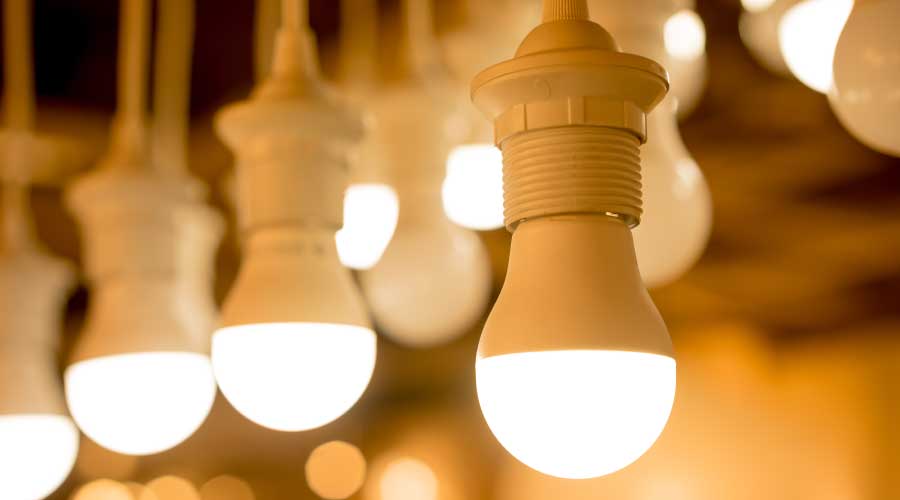Fluorescents, Induction Lighting and LEPs Continue to Expand and Improve
Competing sources are not standing still. Well-established fluorescent sources have been improved and expanded: 32-watt T8 lamps may be directly replaced in the same fixtures with 30-, 28-, and 25-watt units, though some locations may also require ballast change-outs. Lamps with life warranties of 60,000 hours are available, challenging LED's claim of longest-lived source on the block. These products also claim low lumen depreciation — less than 5 percent. To raise light levels, or reduce lamp/fixture quantity, high-output (HO) T8s are available that, when combined with high ballast factor ballasts, may supplant T12 HO lamps and ballasts in the same fixtures. When used in fixtures with specially designed specular reflectors in high bay applications, they are replacing HID units in warehouses and big box stores. A major side perk is that — unlike HID units — high power fluorescents may be dimmed for after-hours operations, demand response, and daylighting.
Additionally, lower-wattage T5, Biax (i.e., hairpin-shaped), and short T8 fluorescent lamps are available to directly replace older versions. Some low-wattage HID and high-wattage incandescent sources are being replaced by very large (e.g., 100-plus watt) compact fluorescent lamps with improved color and reduced lumen depreciation.
A wide variety of electronic ballasts is now available that perform several useful "tricks" such as powerline carrier dimming control, use at multiple voltages, and range of ballast factors (i.e., light outputs). Cost has dropped considerably, with dimming units costing about $30 from several manufacturers.
But wait — there's more. Two other sources — induction and light emitting plasma — are also pushing HID aside in many locations. Induction lamps look a lot like fluorescents: They are tubular and coated with phosphors that glow when activated. Unlike standard fluorescents, induction units have no electrodes, which, when they wear out, are the chief cause of fluorescent lamp failures. Instead, a magnetic field generator excites the mercury vapor in the tube to energize electrons that emit the ultraviolet light that excites the phosphors. The end result is a dimmable fluorescent source with a 100,000-hour lifetime, matching or bettering LED's main claim to fame, with a higher efficacy.
While induction fixtures exist for indoor use, this technology has been scoring high for replacing outdoor HID because of its long life, good color, instant re-strike and dimmability. Some induction units are sized and shaped to replace HIDs in the same fixture (though ballasts must also be changed), greatly cutting retrofit cost.
Light emitting plasma (LEP) is straight out of Buck Rogers' playbook. A radio frequency (RF) emission is concentrated onto a quartz tube containing halide gasses but no electrodes or filaments. The RF beam ionizes the gasses, creating plasma that emits an intense source of white light. With high efficacy and excellent color that competes with all other sources, a LEP lamp not much larger than a multi-vitamin pill has output equivalent to a metal halide lamp 50-plus times larger. Far more intense than the brightest LED, LEP is making its mark with outdoor flood/façade lighting where a tight beam and small fixture is desired. It is also being used in high bay applications and is dimmable.
And even Buck Rogers never conceived of "organic" electric lighting. Still in development, organic LEDs (called OLEDs) are being used to make glowing flat panel light fixtures as thin as a laptop screen. Such an option opens up whole new areas for architectural lighting. Not only would light fixtures start to look and fit like acoustic ceiling tiles, but they could be built into walls, partitions and furniture. OLEDs are dimmable and their color output may be adjusted, allowing them to mimic naturally varying outdoor light.
Related Topics:













